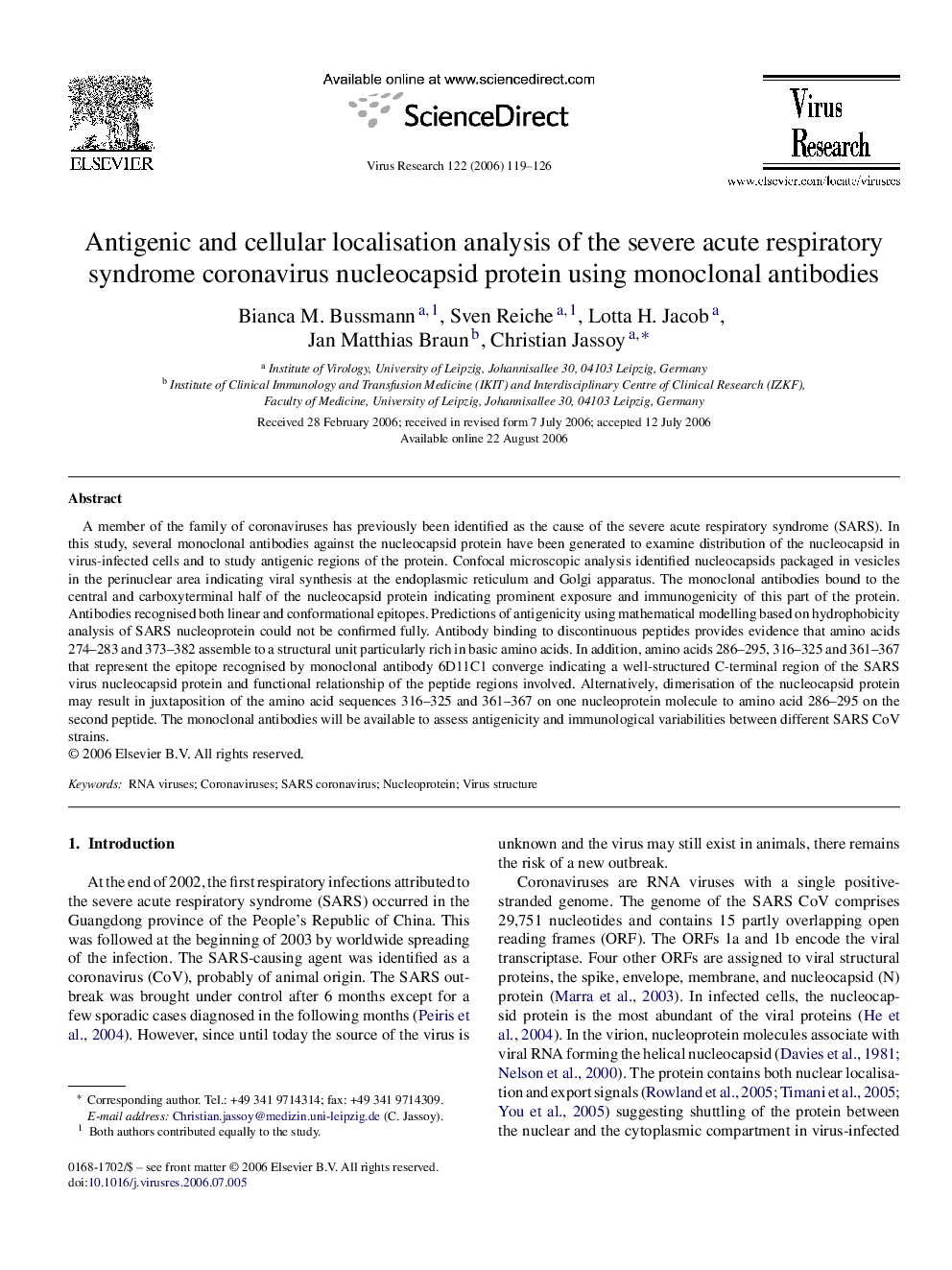| Article ID | Journal | Published Year | Pages | File Type |
|---|---|---|---|---|
| 3431174 | Virus Research | 2006 | 8 Pages |
A member of the family of coronaviruses has previously been identified as the cause of the severe acute respiratory syndrome (SARS). In this study, several monoclonal antibodies against the nucleocapsid protein have been generated to examine distribution of the nucleocapsid in virus-infected cells and to study antigenic regions of the protein. Confocal microscopic analysis identified nucleocapsids packaged in vesicles in the perinuclear area indicating viral synthesis at the endoplasmic reticulum and Golgi apparatus. The monoclonal antibodies bound to the central and carboxyterminal half of the nucleocapsid protein indicating prominent exposure and immunogenicity of this part of the protein. Antibodies recognised both linear and conformational epitopes. Predictions of antigenicity using mathematical modelling based on hydrophobicity analysis of SARS nucleoprotein could not be confirmed fully. Antibody binding to discontinuous peptides provides evidence that amino acids 274–283 and 373–382 assemble to a structural unit particularly rich in basic amino acids. In addition, amino acids 286–295, 316–325 and 361–367 that represent the epitope recognised by monoclonal antibody 6D11C1 converge indicating a well-structured C-terminal region of the SARS virus nucleocapsid protein and functional relationship of the peptide regions involved. Alternatively, dimerisation of the nucleocapsid protein may result in juxtaposition of the amino acid sequences 316–325 and 361–367 on one nucleoprotein molecule to amino acid 286–295 on the second peptide. The monoclonal antibodies will be available to assess antigenicity and immunological variabilities between different SARS CoV strains.
